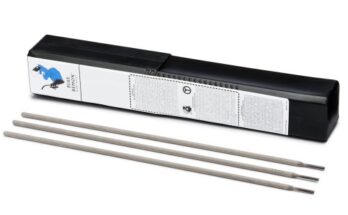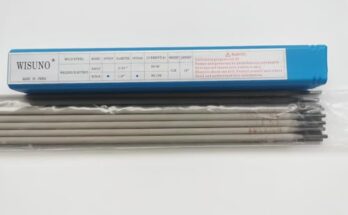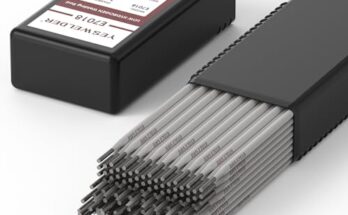Finding the right welding rod can feel overwhelming, especially when you’re working with mild steel. This guide will help you understand the factors to consider and choose the best welding rod for mild steel for your needs. We’ll cover different types, applications, and what to look for in a high-quality rod.
Understanding Mild Steel and
its Welding Requirements
What is Mild Steel?
Mild steel, also known as low-carbon steel, is a common type of steel with a low carbon content (typically less than 0.25%). This makes it relatively soft, ductile, and easy to weld. Its versatility makes it ideal for a vast array of applications, from automotive parts and construction materials to furniture and household appliances. Because of its widespread use, understanding how to weld it properly is crucial for many tradespeople and hobbyists. The ease of welding is a key factor in its popularity, but choosing the right consumables is vital for achieving strong, durable welds. It’s crucial to match the filler metal (the welding rod) to the base metal (the mild steel) for optimal results. Improper matching can lead to weak welds, cracking, and overall project failure. Remember, the success of any welding project hinges heavily on the selection of appropriate materials. Many beginners often underestimate the importance of choosing the right welding rod.
Choosing the Right Welding Process for Mild Steel
Mild steel is highly amenable to various welding processes. Shielded Metal Arc Welding (SMAW), also known as stick welding, is a popular and relatively inexpensive method for home use and small-scale projects. Gas Metal Arc Welding (GMAW), or MIG welding, offers higher speed and better penetration, making it ideal for larger projects and professional applications. Gas Tungsten Arc Welding (GTAW), or TIG welding, provides the highest quality welds with excellent control but requires more skill and specialized equipment. Each process necessitates a specific type of welding rod or wire designed for optimal performance. For example, the filler metal used for stick welding will differ significantly from the wire used in MIG welding. The correct selection ensures a consistent and strong weld, regardless of the chosen welding process. Each welding process presents a distinct set of challenges and advantages, requiring careful consideration of the project’s specific requirements and the welder’s skill level.
Key Properties of Welding Rods for Mild Steel
A welding rod’s properties directly affect the weld’s quality. These properties include tensile strength, ductility, impact resistance, and chemical composition. Tensile strength indicates how much stress the weld can withstand before breaking. Ductility describes the weld’s ability to deform before fracturing. Impact resistance refers to how well the weld can withstand sudden shocks or impacts. The chemical composition of the rod determines its melting point, its ability to flow smoothly into the weld pool, and its overall compatibility with the mild steel base metal. Understanding these properties is paramount to selecting a rod that provides the necessary strength and durability for the specific application. For instance, a welding rod with high tensile strength might be preferred for structural applications, while a more ductile rod might be better for situations requiring flexibility. The chemical composition, often expressed as a designation (like E6013 or E7018), is crucial and provides information about the rod’s properties.
Types of Welding Rods for Mild Steel
E6010 & E6011 Welding Rods
These electrodes are known for their excellent penetration and ability to weld in all positions, even overhead. They’re often used in outdoor applications or where access is limited because of their fast-freezing characteristics, which help reduce weld spatter. The E6010 is a low-hydrogen rod, minimizing the chances of porosity and cracking in the weld. The E6011 is essentially the same as the E6010, but with a higher cellulose content in the flux coating. This allows it to perform well in damp or wet conditions, making it an excellent choice when working outdoors or in environments with high humidity. Both electrodes produce strong welds ideal for construction and repair work. However, they require a bit more skill to control than some other rods due to their aggressive arc characteristics. Their strong penetration is a benefit for thick metal, but careful control is required to prevent burn-through in thinner sections.
E7018 Welding Rods
E7018 welding rods are low-hydrogen electrodes commonly used for high-quality welds requiring superior strength and toughness. They are low-hydrogen, meaning they contain minimal moisture in the coating, reducing the risk of hydrogen embrittlement – a defect that can lead to cracking. This makes them suitable for critical applications where weld integrity is crucial, such as pipelines, pressure vessels, and other high-stress environments. Their deep penetration and smooth arc make them easier to use than the E6010/E6011 rods, though they still require a degree of skill and experience for optimal results. The low hydrogen content improves the weld’s overall toughness, leading to longer life and greater resistance to cracking. Their smooth arc and low spatter make them a popular choice for welders who need high-quality welds with minimal cleanup.
Other Mild Steel Welding Rods
Besides the E6010, E6011, and E7018, several other types are available, each suited to particular applications. E7024 is a versatile option often preferred for its easy handling and smooth arc. It is a good choice for beginners and those seeking a versatile rod for various jobs. For those seeking even higher strength welds in specific positions, there are additional electrode types designed to perform exceptionally well in horizontal or vertical welding. Some rods also contain specific alloys to enhance certain properties of the weld, such as corrosion resistance. Manufacturers provide detailed information on the characteristics and suitability of their products, so checking the specifications before purchase is vital. Understanding the AWS (American Welding Society) designation system will help immensely in selecting the appropriate rod for your specific project and welding process.
Factors to Consider When Choosing a Welding Rod
Welding Position
The welding position significantly influences the choice of welding rod. Some rods are better suited for specific positions like flat, vertical, or overhead welding. For example, E6010 electrodes excel in all positions, while others may be more challenging to use in vertical or overhead welding. Understanding the limitations of each electrode type is crucial for selecting the right tool for the job. Working in overhead positions demands a rod with fast-freezing characteristics to prevent the weld metal from sagging or dripping. Conversely, flat position welding allows for a wider range of electrode choices.
Thickness of the Mild Steel
The thickness of the steel also affects rod selection. Thicker steel requires electrodes with high penetration capabilities to create a strong, complete weld, while thinner materials benefit from rods with lower penetration to avoid burn-through. Using the wrong electrode can lead to incomplete fusion, which compromises the weld’s strength and integrity. For instance, a high-penetration rod like E6010 might be ideal for welding thick plates, while a lower-penetration rod could be suitable for thin sheet metal. Improper electrode selection can significantly impact the overall quality of your welds, leading to costly repairs or project failure.
Desired Weld Quality
The desired weld quality determines the choice of welding rod. If a high-quality, high-strength weld is required, a low-hydrogen electrode like E7018 might be necessary. For applications where aesthetics are important, a rod with minimal spatter is preferred. For applications where speed and efficiency are prioritized, an electrode that produces high deposition rates might be more suitable. The intended application dictates the level of quality required, and the correct electrode should be selected to ensure this level is achieved.
Understanding Welding Rod Terminology
Electrode Coating and Flux
Welding rods have a coating or flux that serves several vital functions. It shields the molten weld pool from atmospheric contaminants like oxygen and nitrogen, preventing the formation of oxides and nitrides that can weaken the weld. The flux also helps to stabilize the arc and provide a smoother, more stable welding process. Different types of flux coatings provide different characteristics to the weld, influencing penetration, arc stability, and other important properties. Understanding the role of the flux is essential for selecting the right electrode for the job.
AWS Classification System
The American Welding Society (AWS) uses a standardized classification system for welding rods and electrodes. The classification number, such as E6010 or E7018, provides critical information about the electrode’s tensile strength, position capability, and other properties. This classification makes it easier for welders to identify and choose the right electrode for their needs. Learning to interpret this system is a valuable skill for any welder, and mastering it allows for the confident selection of electrodes for various tasks. The AWS classification system promotes consistency and safety in the welding industry.
Filler Metal Composition
The filler metal is the material that forms the weld. The composition of the filler metal must be compatible with the base metal (mild steel) to ensure a strong, sound weld. Improperly matching filler metal and base metal can lead to porosity, cracks, and overall weld weakness. Selecting a filler metal with similar chemical composition to the base metal ensures good fusion and a strong, consistent weld. The chemical composition of the filler metal often influences the overall properties of the finished weld.
Tips for Using Welding Rods Effectively
Proper Electrode Storage
Storing welding electrodes properly is crucial for maintaining their quality and performance. Moisture can significantly affect the performance of low-hydrogen electrodes, leading to porosity and cracking. It is imperative to store low-hydrogen electrodes in an oven or a moisture-proof container to preserve their integrity. Maintaining appropriate storage conditions is key to avoiding costly rework and ensures that welds meet the desired quality standards. Ignoring proper storage can lead to a failed weld, potentially creating safety hazards or costly repairs.
Preheating and Post-weld Heat Treatment
Preheating the metal before welding can be helpful, especially when welding thick sections or low-temperature applications. This helps reduce the risk of cracking and produces a more consistent weld. Similarly, post-weld heat treatment can also benefit the weld, reducing internal stresses and improving its overall toughness and durability. Both preheating and post-weld heat treatment are crucial steps in optimizing weld quality and meeting specified strength requirements. Following manufacturer guidelines and understanding the implications of each step are paramount for successful welding.
Proper Welding Techniques
Proper welding techniques directly impact the weld’s quality. Maintaining a consistent arc length, proper travel speed, and correct electrode angle are vital for achieving a strong and durable weld. Improper welding techniques can lead to defects such as undercutting, poor penetration, or excessive spatter, thereby compromising the weld’s integrity and structural soundness. Mastering proper welding techniques is a continuous learning process, requiring patience, practice, and continuous skill development.
Comparing Different Welding Rods for Mild Steel
| Feature | E6010 | E6011 | E7018 |
|---|---|---|---|
| Tensile Strength (psi) | 60,000 | 60,000 | 70,000 |
| All-Position Welding | Yes | Yes | Yes (with some limitations) |
| Moisture Sensitivity | Moderate | Low | Very Low |
| Penetration | High | High | Deep |
| Spatter | Moderate | Moderate | Low |
This table provides a basic comparison; detailed specifications are always available from the manufacturer.
Cost Considerations for Mild Steel Welding Rods
The cost of welding rods varies depending on the type, size, and quantity purchased. While higher-quality rods like E7018 may be more expensive upfront, their superior performance and reliability often result in cost savings in the long run due to reduced rework and improved weld quality. Choosing the right rod based on the project’s requirements balances cost and performance for optimal efficiency and value. Sometimes, a slightly more expensive rod translates to fewer rejects and a more efficient overall welding process, saving time and materials.
Safety Precautions When Welding Mild Steel
Welding involves inherent risks, and appropriate safety measures are crucial. Always wear appropriate Personal Protective Equipment (PPE), including a welding helmet with a suitable shade lens, welding gloves, protective clothing, and safety shoes. Ensure adequate ventilation to avoid inhaling harmful fumes. Follow all manufacturer instructions for the welding equipment and rods you are using. Never compromise on safety; prioritize safety over speed or convenience. Welding safety is paramount, and neglecting precautions can lead to severe injury or health consequences.
Frequently Asked Questions
What is the best welding rod for mild steel for beginners?
For beginners, E7024 is often recommended due to its relatively easy handling and smooth arc. It’s more forgiving than some other electrodes, making it a good choice for learning fundamental welding techniques. However, remember that practice and proper technique are key regardless of the electrode type.
What is the difference between E6010 and E7018 welding rods?
The main difference lies in their tensile strength and moisture sensitivity. E7018 boasts a higher tensile strength (70,000 psi vs. 60,000 psi for E6010) and is significantly less sensitive to moisture. This makes E7018 ideal for applications requiring superior strength and reliability, while E6010 is a good general-purpose rod. Learn more about the AWS classification system to understand these differences better.
Can I use any welding rod on mild steel?
While many rods work on mild steel, not all are ideal. Using an incompatible rod can lead to poor weld quality, weakness, and failure. Always select a rod with a similar chemical composition to the base metal for optimal results. Refer to the AWS classification system to ensure compatibility.
How do I choose the correct diameter welding rod?
The rod diameter should be matched to the thickness of the metal being welded and the amperage of your welding machine. Thicker metal generally requires larger-diameter rods, while thinner metal requires smaller ones. Consult your welder’s manual and the electrode manufacturer’s instructions for the appropriate rod size.
What should I do if my weld is brittle?
Brittleness can result from several factors, including improper welding technique, moisture in the electrode, or insufficient preheating. Check your welding technique, ensure proper electrode storage, and consider preheating the metal before welding. If the problem persists, consult a welding expert for further analysis.
How can I prevent weld spatter?
Weld spatter can be minimized by using the correct amperage, maintaining a consistent arc length, and ensuring proper electrode angle and travel speed. Choosing an electrode with lower spatter characteristics can also help. Practice and experience significantly improve spatter control.
What is the shelf life of welding rods?
The shelf life of welding rods varies depending on the type and storage conditions. Low-hydrogen electrodes, especially, are sensitive to moisture. Always check the manufacturer’s recommendations for proper storage and shelf life. Proper storage significantly extends the lifespan of the welding rods and maintains their quality.
Final Thoughts
Selecting the best welding rod for mild steel depends on several factors, including your welding process, the thickness of the metal, the desired weld quality, and your skill level. By understanding the different types of rods available, their properties, and the considerations discussed above, you can make an informed decision and achieve strong, durable welds every time. Remember to always prioritize safety and follow proper welding techniques for optimal results. With practice and the right tools, you can confidently tackle any mild steel welding project. So, grab your welding gear, choose the right rod, and get started on your next project!


